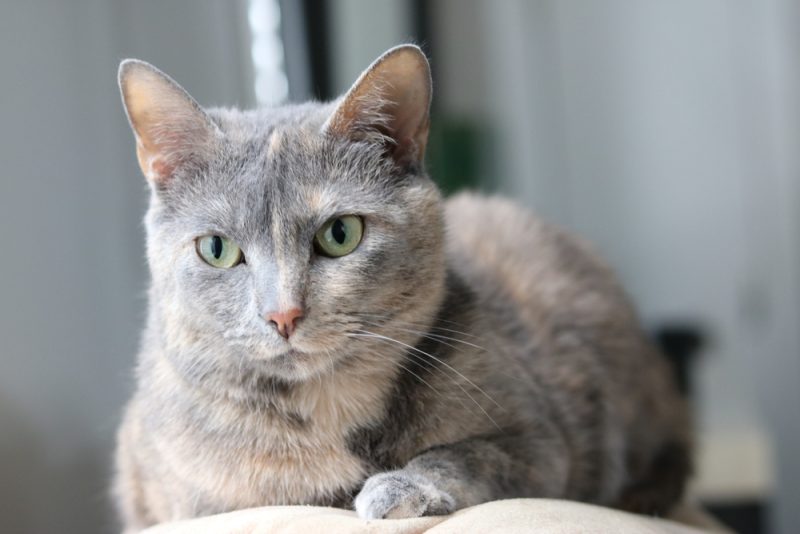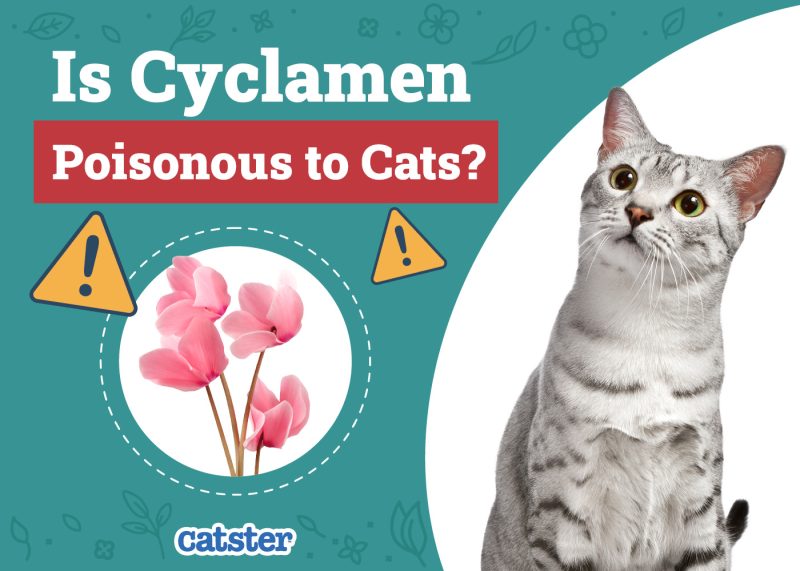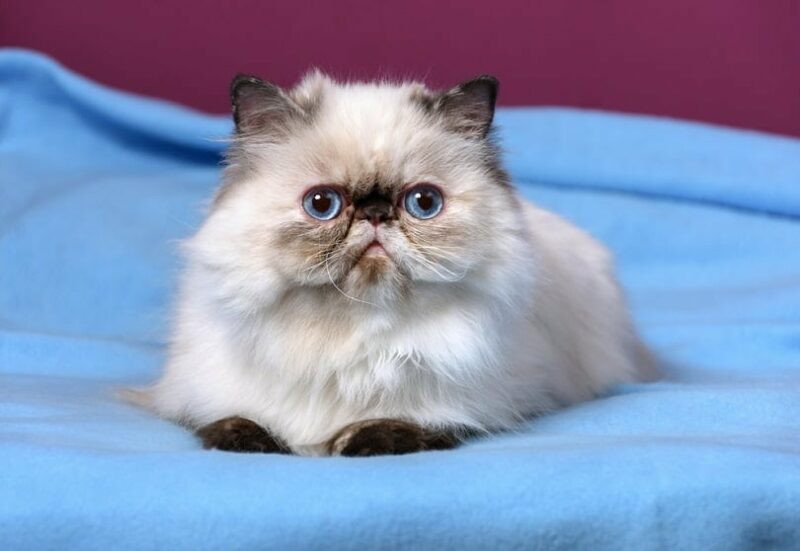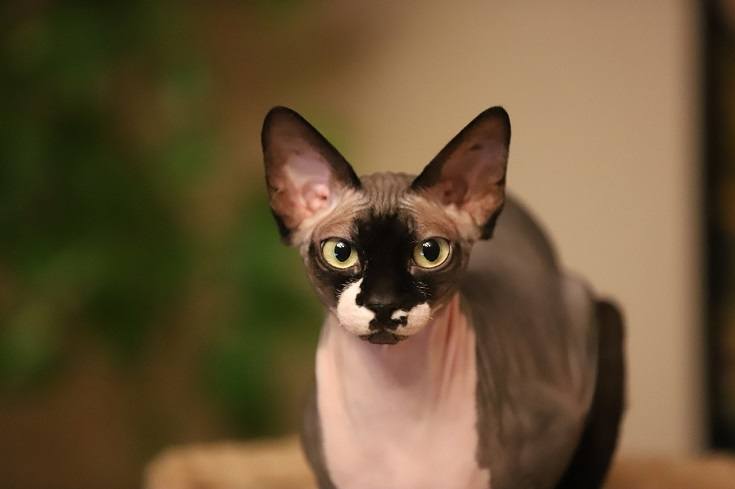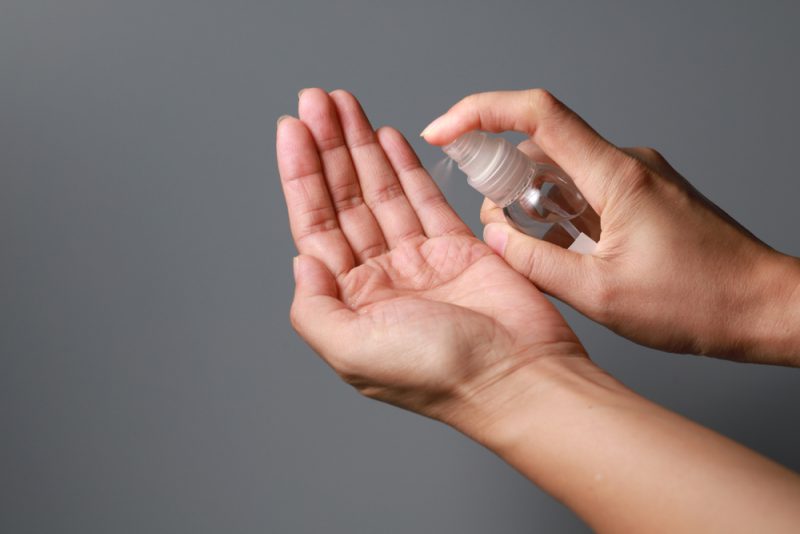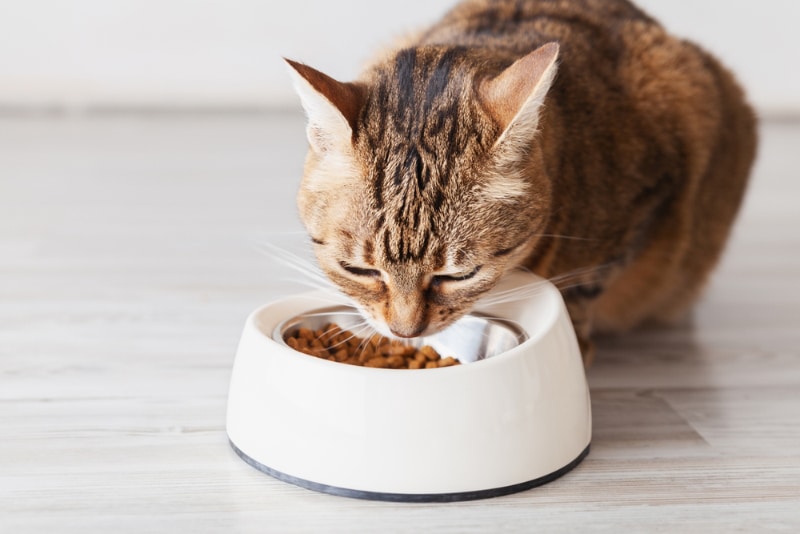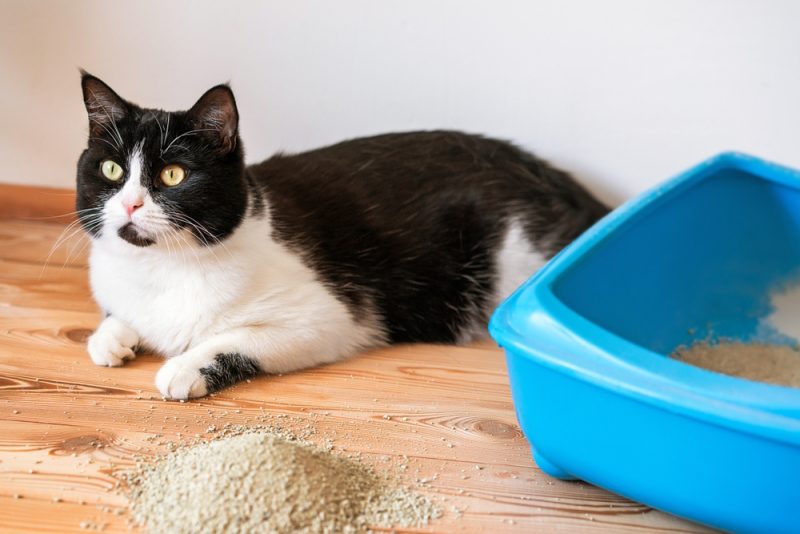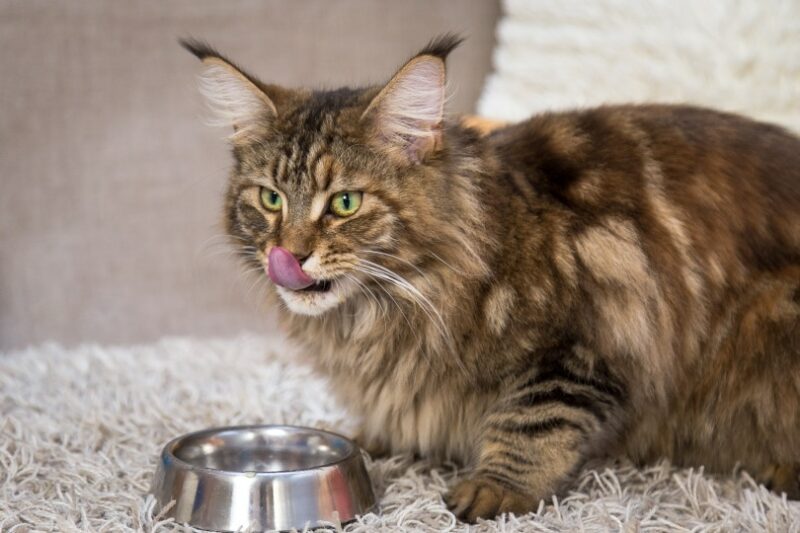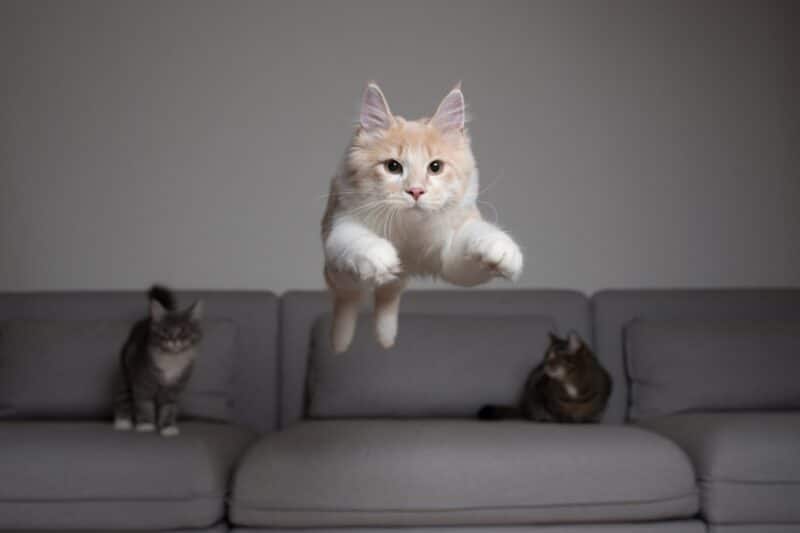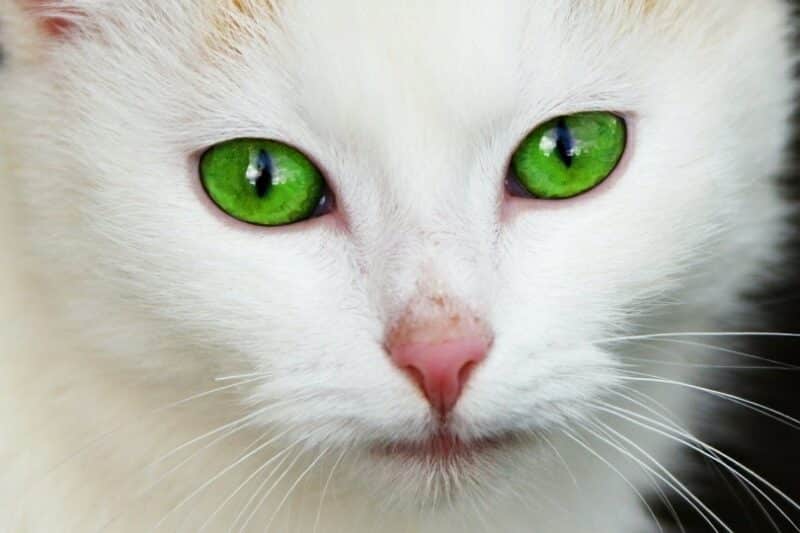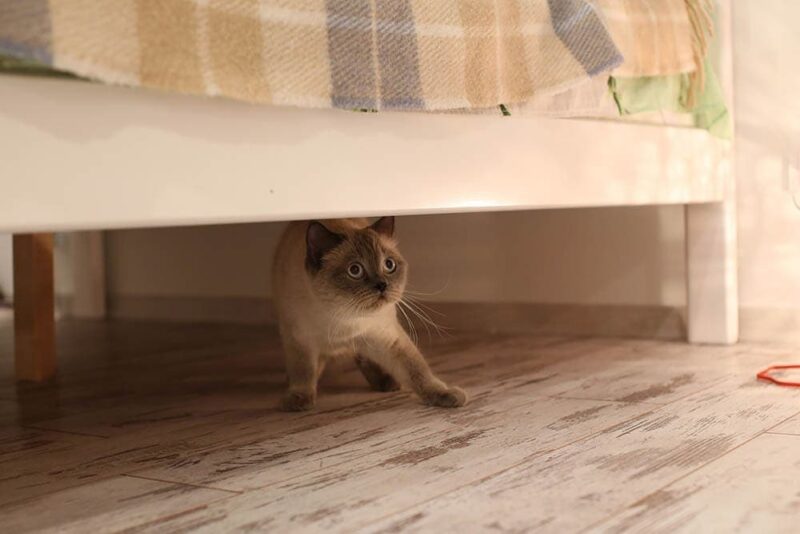The Dilute Tortoiseshell cat or “Dilute Tortie” are one of the most gorgeous and unique felines on the planet. They have a coat that contains two colors and diluted pigmentation. Despite their unique coat, these cats have just about the same health and nutritional requirements as cats with a plainer coat, making them beautiful and low-maintenance pets!
To find out more about the dilute tortoiseshell cat, keep reading. In this guide, we’ll go into detail about what creates a dilute tortie coat and how to take care of one of these cats. At the end, we’ll also include six interesting facts about dilute torties.
Let’s learn more about these purrfect cats!
Dilute Tortoiseshell Cat
A dilute tortie, or dilute tortoiseshell, is a cat that comes with the popular double-colored diluted coat pattern. It is important to emphasize that “dilute tortie” does not refer to a cat breed. Instead, it refers to a coat coloration that many breeds can have.
Standard torties have a coat that includes orange and black fur. Dilute torties, on the other hand, do not have orange and black colorations. On the contrary, their double-colored coat includes a muted color scheme, often looking blue and yellow.


Dilute Tortie Coat
You may be wondering how dilute torties get this unique coat scheme. The answer is relatively simple to state but potentially difficult to understand. Genetics impact a cat’s coat. As a result, dilute torties have a specific genetic background, which allows them to have a unique, diluted double-colored scheme.
To fully understand the dilute tortie coat, we must dig into genetics. This is a bit confusing, but the effort is worth it. Before jumping into coat genetics specifically, it’s important to understand that there are two sex chromosomes: Y and X. Females have two X chromosomes, whereas males have one X chromosome and one Y chromosome.
Tortie Coat Genes

First, let’s talk about the genes behind the tortie, or double-colored coat. These genetic factors apply to standard torties, as well as dilute torties. We will talk about dilute torties specifically in the next section.
Even though the X chromosome is considered a sex chromosome, it contains much more information than just an animal’s biological sex. For example, it is also responsible for a cat’s coat color. Because females receive two X chromosomes, female cats can receive two separate coat instructions, whereas males can only receive one.
Whenever female cats receive a code for a black coat and a code for an orange coat, they end up having a tortoiseshell coloration, complete with both colors. Conversely, males only receive one X chromosome, meaning that they only get instructions for one color.
Dilute Tortie Coat Genes
So far, we have only looked at the genetics behind the tortie coloration. More genetic factors are required for the dilute coat gene. The melanophilin gene, or the MLPH gene, is responsible for the coat’s pigment. In other words, the gene allows the cat to produce orange or black pigment. Sometimes, this gene is mutated through a recessive gene.
Whenever the gene mutates, the coat pigment doesn’t work as it should. As a result, the tortie coloration becomes diluted, turning the orange color yellowish and the black color bluish. Since this mutation occurs through a recessive gene, both parents must carry the trait for the offspring to be a dilute tortie.
To put the tortie genes and dilute genes together, dilute torties have two different color codes, one on each X chromosome, which allows the cat to have orange and black fur. In addition, they have the MLPH gene, which mutates the pigmentation of the coat colors. This turns the orange fur yellow and the black fur blue. As a result, they have a diluted tortie coat.
Taking Care of Your Dilute Tortie
Luckily, the genes behind the dilute tortie coat affect nothing other than the coat coloration. In other words, your tortie should not have any special needs or health considerations due to the dilute tortie genetics. For this reason, you would take care of a dilute tortie just like you would any other cat.
Cat Health
Although there are exceptions, dilute tortoiseshell cats tend to be very healthy and dependable. Since the breeds that can have this coat are healthy overall, dilute torties come with very few common health issues.
One of the more common issues that plague dilute torties is obesity, though that is due to the cat’s feeding schedule and owner, not the cat’s health. To ensure your dilute tortie remains healthy, provide proper nutrition and exercise.
Cat Nutrition
Something that a lot of people do not realize is that cats are obligate carnivores. This means they need a diet primarily consisting of meat or animal organs. Never put your cat on a vegan or vegetarian diet.
Since obesity is a common issue in felines, it is vital to feed your cat the right amount of food. The amount will depend on your cat’s age, size, and weight. Talk to your veterinarian to find out exactly how much food you should feed your dilute tortie.
Generally speaking, veterinarians recommend feeding an adult indoor cat ¼ of an 8oz. cup of dry cat food a day. Additionally, feed the adult cat 2.5 ounces of canned cat food once daily, which is about ½ a can of regular cat food. You will need to adjust this food recommendation for younger or older cats and cats with special health concerns.
Regardless of the cat’s age, weight, or health, you should constantly provide clean drinking water. Cats need a lot of water to survive, just like other mammals. Put the drinking water somewhere that they can easily find it. It’s also a good idea to lift it off the ground slightly to prevent debris or other contaminants from entering the water.
Once again, talk to your veterinarian to find a specific food recommendation and regimen based on your cat’s needs.

Cat Maintenance
In addition to feeding your dilute tortie the right nutrition, make sure to maintain its fur. Exact maintenance will depend on the cat’s breed. Nevertheless, you should maintain your cat’s fur by brushing it regularly and bathing them, as necessary.
Brushing your cat’s fur will keep it clean and free of mats. It will also reduce allergens and pet dander in the air. If your dilute tortie has a long coat, brush their hair more often and be gentle.
As for bathing your cat, this is something you should not have to do often, especially if you have a short-haired breed. Only bathe your cat if you notice a foul odor or accumulated dirt and debris. Older or overweight cats may need a bath more often since they may have trouble reaching all parts of their body.
Cat Personality
Many dilute tortoiseshell cat owners swear that their cats have an attitude called “tortitude.” They believe their tortie shows much more sass and personality than cats with a different coat. Interestingly, some studies have shown a potential link between coat color and aggression, though the studies are not conclusive.
Paying attention to your cat’s personality is more important than their coat color. In most cases, a cat’s background and living situation will determine its personality more than its appearance or coat.

The 6 Interesting Facts About Dilute Torties
Here are some more interesting facts about dilute torties:
1. Dilute Tortoiseshell Cats Are Almost Always Female…
Since the X chromosome determines coat color, dilute torties are almost always female. To have both colors, the cat must receive two sets of instructions regarding the cat’s coat coloration. As a result, healthy males only receive one X chromosome, making it impossible to have a tortie coat.

2. … But Males Can Inherit the Coat Too
However, males can inherit a tortie coat. When this happens, a male cat receives two X chromosomes in addition to the Y chromosome. This genetic anomaly results in a male tortie cat with two colors. A male cat with two X chromosomes will have several other health issues because of the genetic anomaly. Most commonly, it will not be able to reproduce.
This genetic anomaly is known as Klinefelter syndrome. It can also be found in humans. Like cats with Klinefelter syndrome, humans with a genetic anomaly are unlikely to reproduce. Because males with this gene cannot reproduce, it is impossible to breed dilute tortie cats, no matter how hard you try.
3. Many Breeds Can Have Dilute Tortie Coats
Many people mistake dilute torties for cat breeds. On the contrary, dilute tortie simply refers to a specific coat combination. Several breeds can have this beautiful coat. For example, the American Shorthair, Cornish Rex, and Maine Coons are some of the most popular cats with dilute tortie coats.
The length of cat hair does not determine whether or not the breed can have this unique coat color either. Both short and long-haired cats are known to be dilute torties.
4. They May Have an Attitude
As we described above, many dilute tortie owners claim that their cat has an attitude outmatched by none. Though the environment definitely determines a cat’s personality more than its coat, studies suggest that there is a link between aggression and coat color.
Some experts estimate that this additional aggression is linked to female hormones. Since the more aggressive cats tend to be female, their aggression is probably due to hormones, not specifically their coat color.
5. They Have A Lot of Folklore Surrounding Them
Torties are known to be the star of many myths and folklore. For example, male torties are known as good luck whenever they enter a home in Ireland. Meanwhile, the coat color is associated with money and wealth in the US, which is why these cats are sometimes called “money cats.”
6. They Aren’t the Same As a Calico Cat
Sometimes, you may hear a cat called a “tortoiseshell calico,” but that is impossible. Torties and calicos are two different types of cat coats. As we learned above, torties have two colors—black and orange. Calicos, in contrast, have three colors—white, black, and orange.
Like torties, calico coats are typically only found in females since the X chromosome determines the coat color. Male cats can also have a calico coat if they have Klinefelter syndrome.

Final Thoughts
Once again, “dilute tortie” simply refers to a cat’s coat. Various breeds can demonstrate this coat type, but nearly all dilute tortoiseshell cats are females. Since the genes that create this diluted tortie pigment primarily only affect the cat’s coat, you will care for your dilute tortie just as you would any other cat. Just watch out for that “tortitude” these cats are known for!
See also:
Featured Image Credit: Kenedyxx, Shutterstock
